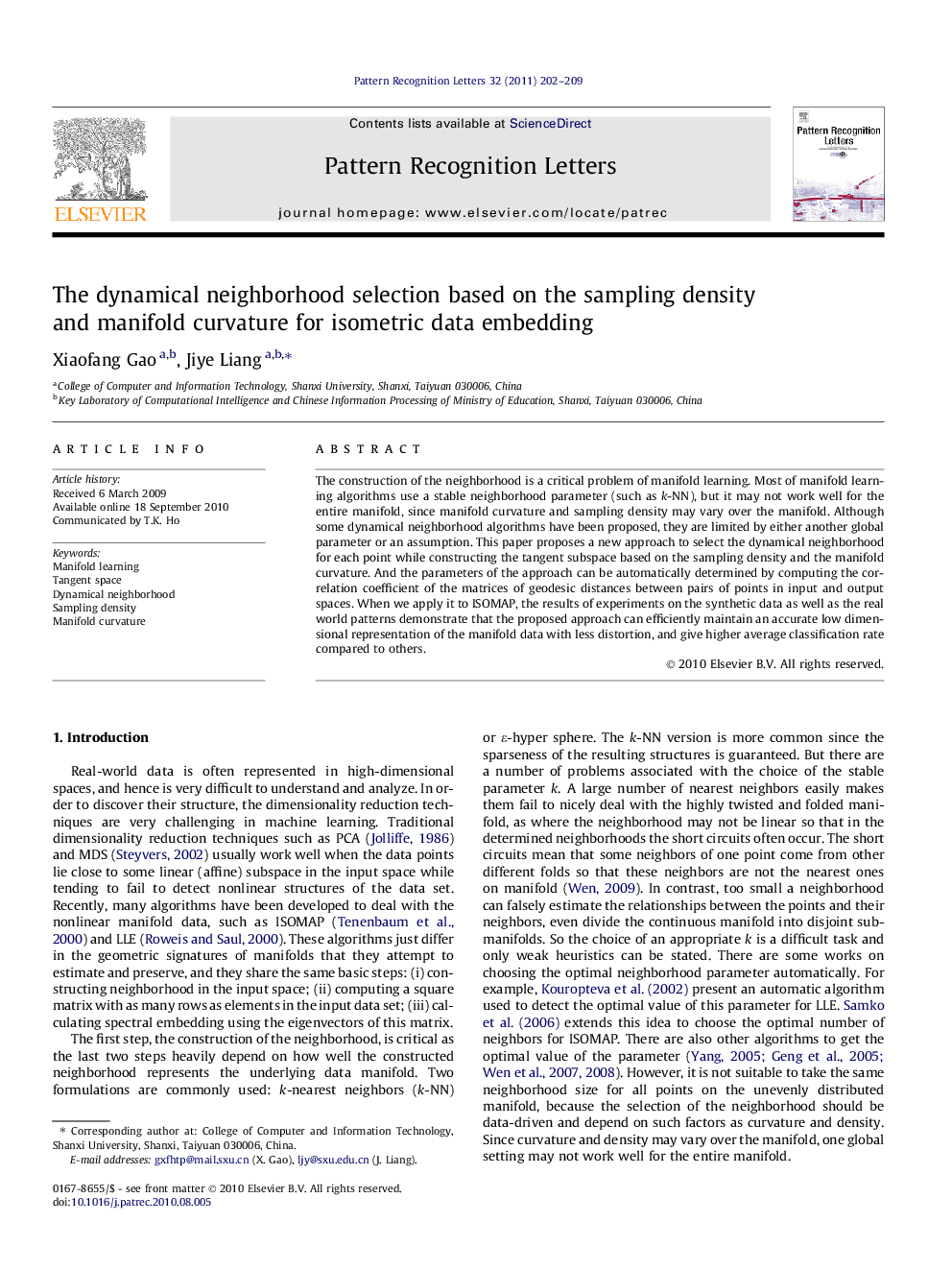| Article ID | Journal | Published Year | Pages | File Type |
|---|---|---|---|---|
| 534853 | Pattern Recognition Letters | 2011 | 8 Pages |
The construction of the neighborhood is a critical problem of manifold learning. Most of manifold learning algorithms use a stable neighborhood parameter (such as k-NN), but it may not work well for the entire manifold, since manifold curvature and sampling density may vary over the manifold. Although some dynamical neighborhood algorithms have been proposed, they are limited by either another global parameter or an assumption. This paper proposes a new approach to select the dynamical neighborhood for each point while constructing the tangent subspace based on the sampling density and the manifold curvature. And the parameters of the approach can be automatically determined by computing the correlation coefficient of the matrices of geodesic distances between pairs of points in input and output spaces. When we apply it to ISOMAP, the results of experiments on the synthetic data as well as the real world patterns demonstrate that the proposed approach can efficiently maintain an accurate low dimensional representation of the manifold data with less distortion, and give higher average classification rate compared to others.
Research highlights► Select the dynamical neighborhood for each point while constructing the tangent subspace based on the sampling density and the manifold curvature. ► The parameters can be automatically determined by computing the correlation coefficient of the matrices of geodesic distances between pairs of points in input and output spaces. ► Apply the optimal approach of neighborhood to the basic ISOMAP algorithm and verify its effectiveness.
